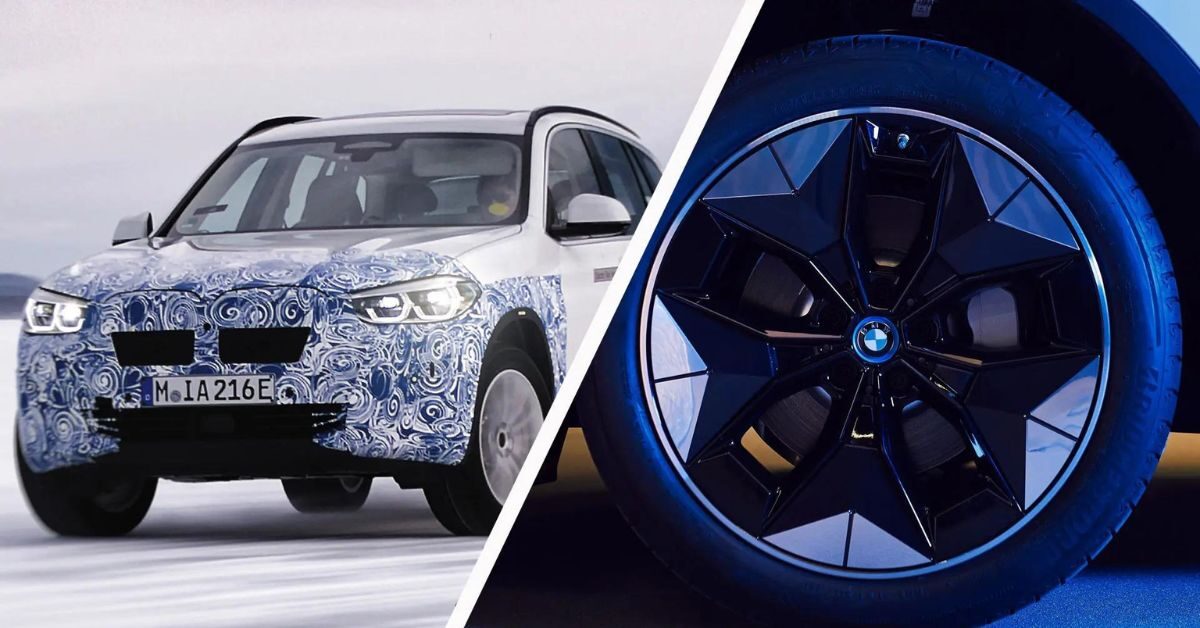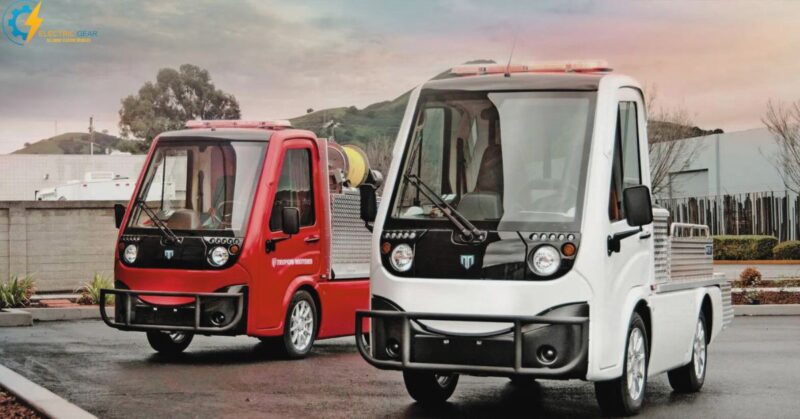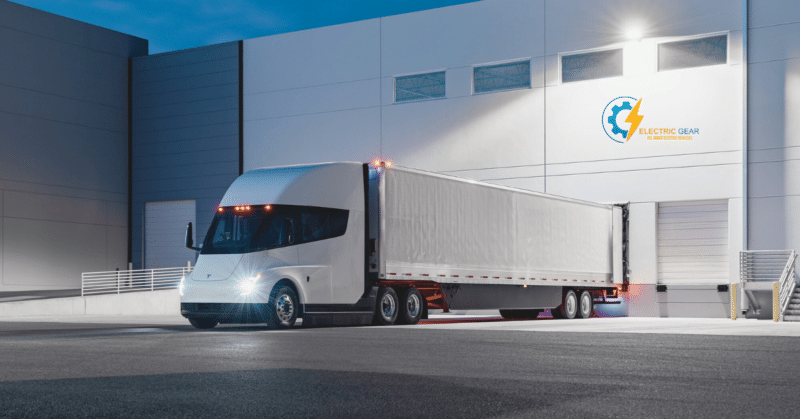EV Wheels
EV wheels are crucial to the vehicle’s overall design and functionality. They are essential to the EV’s operation and significantly impact its efficiency and driving range. In this context, aluminium and carbon fibre are lightweight materials manufacturers use to lower the vehicle’s curb weight and increase fuel economy. The vehicle’s efficiency and range may be further improved by paying attention to the wheel’s aerodynamic shape.
To maximize mileage, EV wheels are constructed in a particular way. Specifically, they have less rolling resistance than standard tires, translating to less friction when moving across the ground. An electric vehicle needs less energy to keep going if there is less resistance to its motion. Its improved range is the result of its use of less electricity.
Electric Vehicle Tires
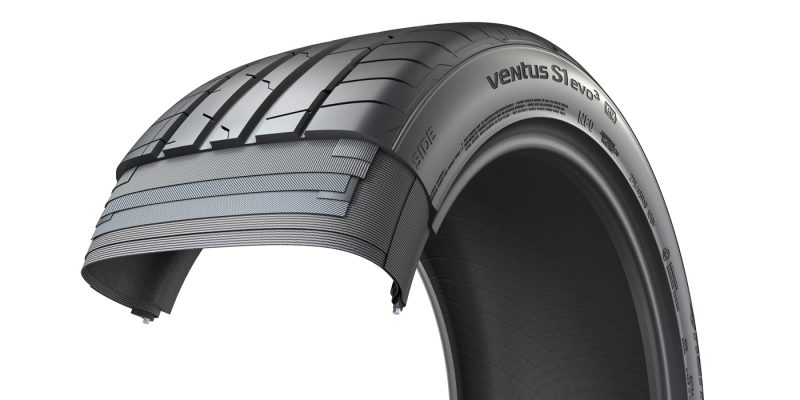
Tires for ICE cars and EVs are constructed differently. They share the same outer appearance but have distinct capabilities.
Just as men’s shoes correctly transfer the force of the legs to the earth and reduce foot weariness, so do tires for cars. Tires, essentially the footwear of a vehicle, perform the same function. Power is transferred to the road, allowing the vehicle to make sharp turns and halt precisely where you designate.
Therefore, tires are crucial to a vehicle’s functionality. Tires that can handle the power and weight of electric vehicles are essential for those vehicles.
No other component of an EV makes contact with the earth except the tires. Therefore, it significantly affects the fundamental characteristics of a vehicle, including travel comfort, control, shaking, pollution, and economy. Tires have a tremendous impact on both steering and braking. The tire makes a big difference in how well a vehicle is handled.
Because tires are typically kept for an extended period, the quality of their construction is just as crucial as their function. There are countless ways in which tire quality can cause vibrations or shaking of the vehicle.
Tires on some Tesla models are stuffed with polystyrene. Continental, who makes them, says their tires can lessen noise by up to 9 decibels. To achieve this, a special polyurethane foam is inserted into the tire’s interior, serving as a sound reducer.
The “air pressure” will stay permanently set at a predetermined value throughout the tire’s lifetime. They’re gentler than solid tires, keeping about 65% of a pneumatic tire’s impact absorption.
Why do EV Tires Wear out so Fast?
The mighty, immediate power generated by electric cars causes them to accelerate and cause additional weight, which causes the tires to degrade 20% quicker than those of internal combustion engine vehicles.
Why are EV Wheels Different
EV wheels are different due to under listed reasons:
Electric cars accelerate faster than internal combustion engines, so their tires wear 20% more quickly. EVs have high immediate power.
- Most electric cars use high-quality tires with larger sides.
- Longer braking distances result from higher bulk and drag, so we prioritize grip.
- Electric car tires are better, more energy-efficient, and low-impact due to high rapid power, higher weight, long-range need, and less noise.
- Noise Reduction: EVs don’t have engines, so they’re quiet. To keep the trip calm, EV tires must limit road noise as much as feasible. Unique tire designs and sound-absorbing foam and rubber materials reduce noise.
- Withstands Weight: EV tires can handle the 10–20% larger weight of EVs. EV-specific tires are necessary for optimum efficiency because they can handle the more significant load. Regular tires would fade faster.
- Strong Traction: Since EVs have strong initial propulsion and high output from the time a driver steps on the pedal, EV tires must have more excellent traction, turning, and braking. EV tires have rigid, wide-centre rib designs for grip.
- Durability: EVs require special tire formulas for their unique driving experience. EV-specific tire compositions require high-loading glue and silica from natural resources. The more challenging, more robust material improves EV power transfer and driving.
- Sliding resistance is another essential aspect of EV tire creation. Lower rolling resistance reduces energy loss and boosts battery efficiency. The rubber material and stiff design patterns, tire shapes, and structures can be used to reduce rolling resistance during production.
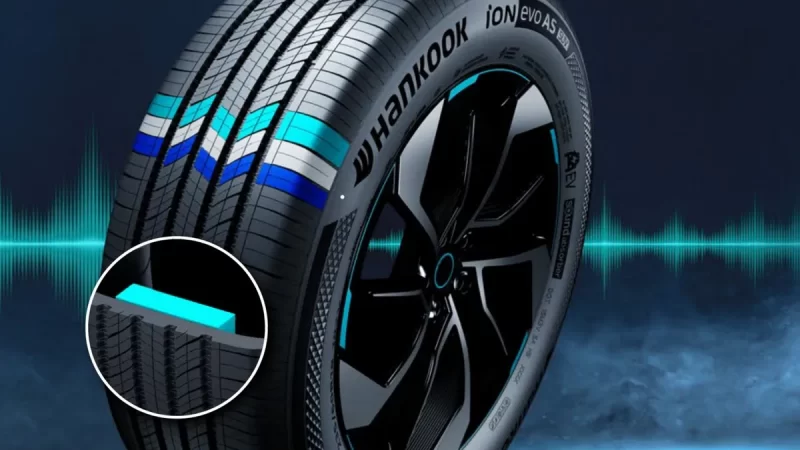
Why do EVs Have Special Tires?
You could put tires made for regular gas-powered cars onto the wheels of your EV, but that would be a poor plan. Tires designed specifically for electric cars are constructed to meet these vehicles’ unique weight, dynamic loading, and max torque needs. Because electric vehicles are heavier and produce more power when they strike the road, their tires tend to wear out more quickly. In addition, the range and quietness of EVs are improved by the reduced wear on the tires.
As a possible example of this, you may be familiar with weight scores. It represents the maximum weight that a given tire can safely carry. Consumer cars in the United States typically come with C, D, and E weight ranges. However, a new class of tires with a higher maximum weight has been introduced, and they go by the acronym HL. These tires are ideal for electric cars because they carry more weight while maintaining the same tire pressure.
Michelin, Hankook, Pirelli, and even Goodyear all released new electric vehicle (EV) tires in the past year with claims of improved quietness.
Longevity, convenience, efficiency, and increased range with reduced road noise all claim these tires.
These Tires Handle Great Torque
The following was a quote from Ian Coke, Chief Technology Officer of Pirelli North America when the business introduced its new P Zero All Season EV tires. “Developing a tire specifically for electric vehicles requires several considerations you do not encounter when working with internal combustion engines. Electric cars are heavier, have more powerful and faster acceleration off the line, and require lower rolling resistance.”
The electric vehicle’s tires need excellent adhesion to hold onto the road. A blowout will quickly wear out a typical tire, which lacks the traction necessary for such moves. Tires are subject to many contacts when driving an electric vehicle, so they must be designed for EVs if the driver wants to experience the vehicle’s instantaneous power and propulsion.
Specific Tires Increase Range

You want the finest efficiency you can get out of your car, whether it runs on pure gasoline or electricity.
When selecting tires for your EV, you should also consider the rolling resistance. Every new “EV tyre” to hit the market in the last few years has claimed improved range by its ability to withstand greater loads while maintaining low rolling resistance.
Since the rotation of the tires creates contact with the road, the electric engines must exert more force to accelerate. Your EV battery life and gas efficiency may decrease as a consequence. Reduced driving range due to worn or wrong tires directly results from altered rolling resistance.
Weight and Load
Electric vehicles typically weigh more than conventional internal combustion engines of the same size and classification. For comparison, the ICE S500 4 Matic weights just 4,610 pounds (1,814 kilograms), while the kerb weight of the electrified Mercedes-Benz EQS 450 4Matic is 5,597 pounds (2,539 kilograms) (2,091 kg).
Although they don’t share a standard chassis, these automobiles all belong to the same size category and market niche. Since batteries typically add significant weight, the EV weighs nearly 1,000 pounds (454 kilograms). There will be solutions to the weight problem in the long run, but for the time being, the tire carcass’s fundamental design must be capable of bearing the weight.
To Reduce Noise
An EV has a significantly reduced decibel level compared to a Combustion car. There is also no gearbox, loud exhaust, inlet piping, and not even the faintest clicking of dozens of moving components. Since the motor in an internal combustion automobile (ICE) quiets some of the tires’ noise, they must be as silent as possible.
Once an EV reaches the velocities of many residential streets, the majority of the noise it makes is caused by the tires, which only increases when travelling on motorways.
Once an EV reaches the velocities of many residential streets, the majority of the noise it makes is caused by the tires, which only increases when travelling on motorways.
Traction under Acceleration
Herein lies one of the most significant difficulties in developing an EV tire. Electric motors produce tremendous power more forcefully and instantly than most combustion engines, transmitting a more substantial jolt to the wheel than nearly any ICE vehicle with a comparable design requirement.
Almost no gas-powered vehicle in the same price range as most electrified cars can match the instantaneous propulsion. Because of this, the performance limit of EV tires must be much higher than that of conventional tires of the same size.
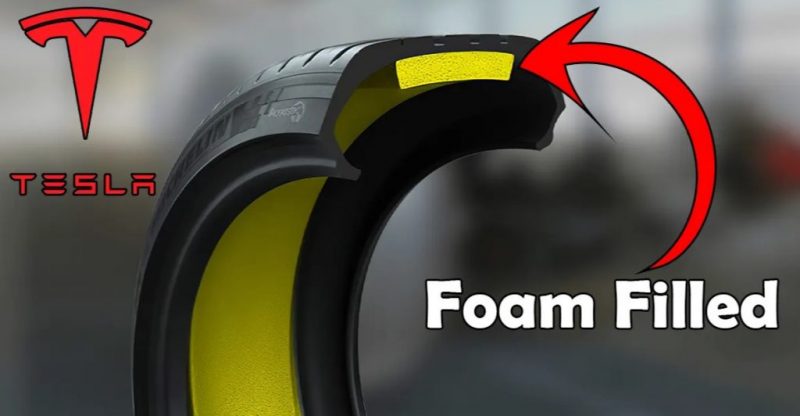
How long do Tesla Tires last?
Between 30,000 to 40,000 miles
Tires on electric vehicles can last anywhere from 30,000 to 40,000 miles if maintained correctly. Regenerative braking systems, as found in electric cars, allow stopping on the tires and battery rather than the brake pads and wheels.
Even if the wear depth of your tires is greater than the minimum, we still advise replacing them every six years. When one tire in a set wears out, you should change the whole set at once.
Do EVs Wear Out Tires Faster?
In addition to accelerating tire degradation, the heavier weight of EVs like Tesla vehicles makes them more expensive to maintain. Because of their greater mass, electric vehicle cells increase rolling resistance and accelerate tire deterioration.
Electric vehicles have one of the most sought-after qualities: rapid propulsion. To achieve 0-60 mph in 4.2 seconds, torque must be increased. Unlike gas-powered vehicles, the electric engine in a Tesla or other EV transmits electricity to the axles without going through the transmission. As a result, the tires eventually wear out due to the constant power.
Modern traction control systems prevent the apparent impacts of burnouts so that you won’t smell smoke, but they still impact millions of micro-burnouts.
What to Consider Before Buying EV Tires
It is always essential to ensure they can handle the vehicle’s load, especially when shopping for tires for an electric vehicle. In practice, heavier EVs necessitate more robust tire construction. You could, for instance, look into XL tires, which were made specifically for transporting massive amounts.
Here is a short rundown of a few tips while going to buy EV tires
Low-friction tires for electric vehicles

For electric vehicles, the significance of a tire’s rolling resistance increases. Reduced rolling resistance improves energy economy and the length of the range. A high-tech substance provides strong bonds between silica and rubber. The tire’s rolling resistance and fuel efficiency benefit from its adaptability to various road conditions.
Maximum grip for shorter EV braking distance
The braking distance increases with increased mass. That’s why it’s crucial to invest in high-quality tires made from the most resilient rubber material you can find.
Low-noise tires for electric vehicles
Since EVs don’t have an engine like gas-powered engines, they create virtually no noise when driven.
Because they transmit less outside disturbance into the car’s interior, low-noise tires help make the ride more pleasant and relaxing when the motor is turned off.
Robust compounds to Hold electric car torque
Electric cars have “immediate power,” meaning they pick up speed when the pedal is pressed. However, electronic cars’ strong immediate power can also accelerate deterioration. The rubber material used for Electric tires must have high traction and minimal sliding resistance.
Withstands Heavy Weight:
Because electric cars typically weigh 10-20% more than their internal combustion engine equivalents, special tires are required.
EV Tires vs Regular Tires
Various weights require different shoe weights for running, and different types of tires are used for different kinds of cars. In the case of electric vehicles, this is because the circumstances the tires must satisfy are distinct from those of internal combustion engines.
Tires for electric cars must be designed to endure the immediate force that these vehicles produce compared to those powered by internal combustion engines. Further, the batteries in electric vehicles make them considerably heavier than vehicles powered by conventional internal combustion engines. Therefore, it must be more robust than internal combustion engines and resistant to wear and tear.
How to make your EV tires last longer?
Get regular maintenance for your vehicle.
An improperly inflated tire will degrade unevenly. The next stage is to reduce the amount of contact slightly. While the rush of speed can be exhilarating, it can be hazardous to your tires. Less pressure on the accelerator means less contact between the wheel and the road, which slows tire degradation.
First, though: make sure you’re rolling on the correct wheel. An all-season tire is your best bet if you don’t reside in exceedingly cold regions. Some Tesla versions sold in warmer climates may have standard summer tires instead of winter tires, which will perform poorly in the snow. It’s the same with regularly using winter tires in temperatures above 45 degrees Fahrenheit.
Visual Inspection
Always make sure to check the condition of your tires visually. Owners of electric cars (EVs) have it more difficult than those of conventional automobiles (ICEs) in this regard. This is because an experienced technician can only physically examine your EV, including its tires, as frequently as they would with a vehicle powered by a fuel-burning motor that requires regular oil changes.
Tread Depth Check
Tread-level inspections are something that can only be put off for a while. The authorized minimal foot depth is 2/32 inches, a tiny quantity that cannot be seen with the unaided eye.
Air Pressure Check
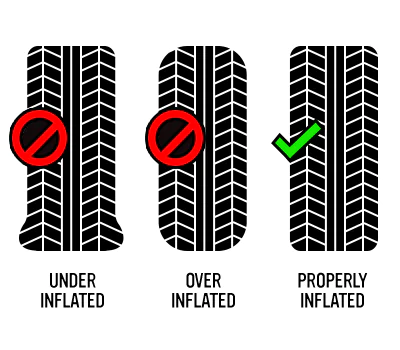
It needs to be done frequently. A good rule of thumb for EV drivers is to inspect and adjust their EV wheels and tire pressure once a month. Doing so will help them get as near as possible to the factory-recommended air pressure for their tires, which will help their car reach its claimed range.
Rotate Your Tires
After every 5,000 to 8,000 miles of driving
The current method of reminding drivers of internal combustion engine (ICE) cars to spin tires at oil changes needs to be more effective. While there is no hard and fast rule about how often EV wheels need to be changed, doing so every 5,000 to 8,000 miles or every six months is a decent rule of thumb that will help ensure that all four tires degrade equally and last as long as possible. If your tires wear equally, you won’t feel any directional instability.
Regular EV Wheel Alignment
You should examine your vehicle balance once every six months or more frequently if you frequently drive over curbs, potholes, or other obstacles. A professional can inspect the tires for uneven wear and suggest balance or rotation if necessary.
Tips to Improve EV Tire Life
Improving Tire Mileage
To improve the mileage you get from your tires, maintain tires at the recommended tire pressures, observe speed limits and advisory speeds, and avoid:
- Rapid propulsion or breaking away.
- There will be sharp deceleration and acceleration.
- Debris and cracks in the pavement.
- Parking is too close to the sidewalk.
- Leaking harmful substances into tires and causing them to malfunction.
Can I Put Regular Tires on EVs?
You can place any wheel style on an electronic car if they are the correct size. It would be best if you didn’t do that for many reasons. Electric vehicle (EV) tires are higher quality than standard tires, enhancing traction and handling.
Are EV Wheels Covered Under Warranty?
In addition, most vehicle service contracts (VSCs), also known as expanded car guarantees, will not pay for replacing tires because they are a high-wear component.
Do Electric Cars Need a Wheel Alignment?
Since proper tire alignment is crucial to the longevity of an electric vehicle, it is suggested that owners get their cars checked every six months.
Which Tires are Best for Electric Vehicles?
The Best EV and Hybrid Tires to Buy
- Michelin Energy Saver A/S. …
- Goodyear ElectricDrive GT. …
- Pirelli P Zero All Season Plus ELECT. …
- Goodyear Assurance Fue
EV Wheels Complete Guide: Aesthetics and Performance

Imran is an experienced content writer who crafts engaging and informative articles for a variety of industries. With a keen eye for detail and a passion for storytelling, Imran delivers high-quality content that resonates with readers. Whether he’s writing blog posts, social media content, or website copy, Imran is committed to delivering compelling content that drives results.

